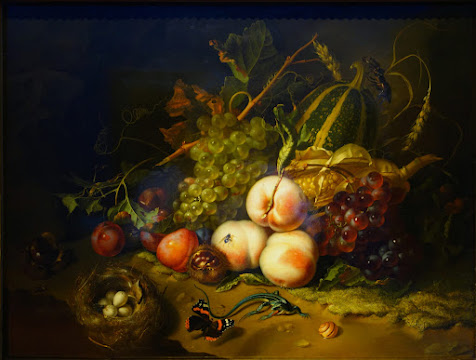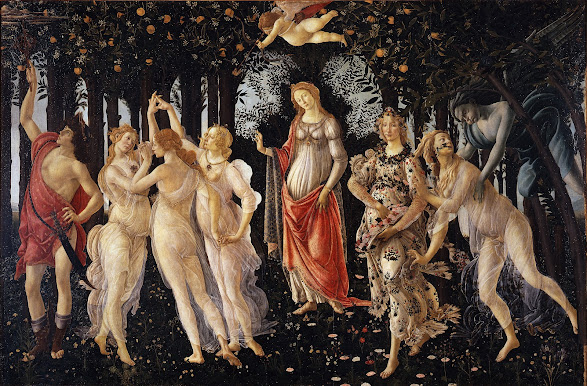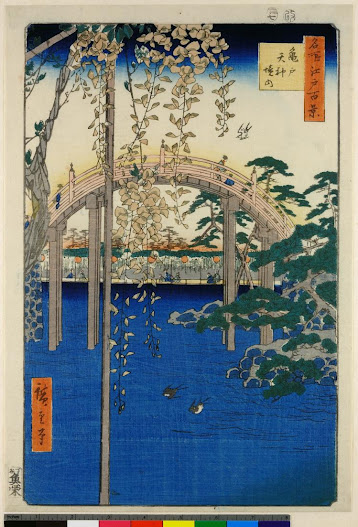Baroque Blog

The painting shown below is "Fruit and Insects" by Rachel Ruysch. The work of art was produced in 1711 and is currently housed at The Uffizi Museum in Florence, Italy. This piece was crafted on wood using oil paints. At first glance, this work of art appears to be a produce still life. But upon closer inspection, you will notice the hidden gems that tie Ruysch's work to the expansion of science during the Baroque time period. This painting incorporates insects, lizards, and even bird nests and eggs. The artist does this seamlessly, considering I don't often picture my produce with reptiles and insects surrounding them. That statement itself, may showcase a problem with the modern world. These species are often found among gardens, farms, and areas where these types of fruits are grown. I think this painting pulls me towards a world before the influence of industrialization. It feels simple and natural. I suppose it feels more connected to the Earth, as we do see ac...

